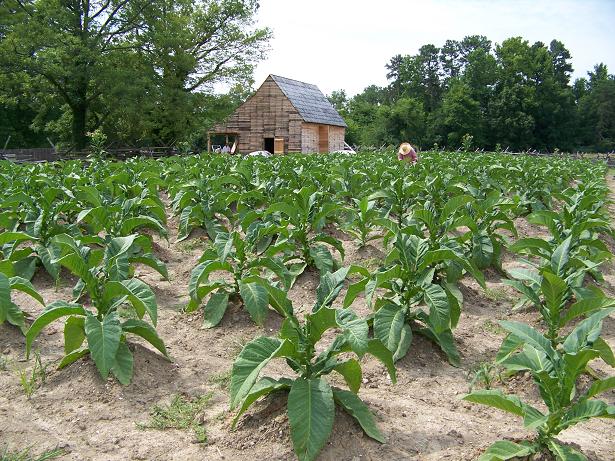Thoughts of a Farmer Part II
I remember the moment that the picture above was taken at Great Hopes Plantation over ten years ago. My head seemed a bit warm under my broad-brimmed straw hat on this fine clear day as sweat dripped off my nose onto the tobacco leaves, but I and my fellow historic farmers were pleased with our crop. The plants had been freshly topped and the leaves looked good. Worms never rest and though small, there were many.
This scene could be straight out of the 18th century when many thousands of Virginians worked in the fields growing the crop that fueled the wealth and influence of Virginia. The difference though is that minutes after this photo was taken, guests could be seen in the field picking off worms with me. The many thousands who have shared this experience at Colonial Williamsburg have literally touched the past. And if they stuck with it a little while — it might be said they have “sweated” the past.
Landon Carter was a Crop Master. Residing on Virginia’s Northern Neck, this 18th-century planter loved everything about growing tobacco and spent considerable time writing about it in his diary. This kind of prideful exercise of thought and labor earned him this esteemed designation. Growing good tobacco made the man in Landon’s view and it was shared by many. I figure that Old Landon, known as a severe curmudgeon, to more than a few, would be disappointed in me if I did not share some of the basics of this crop using 18th-century tools and techniques. So here it goes with a quick view from under the sun for the last 18 years.
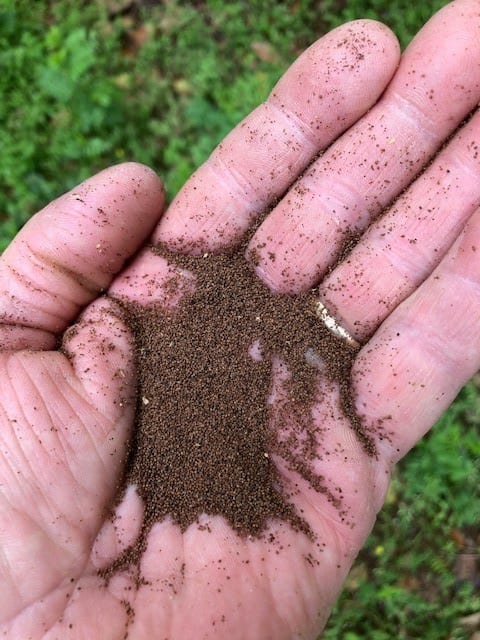
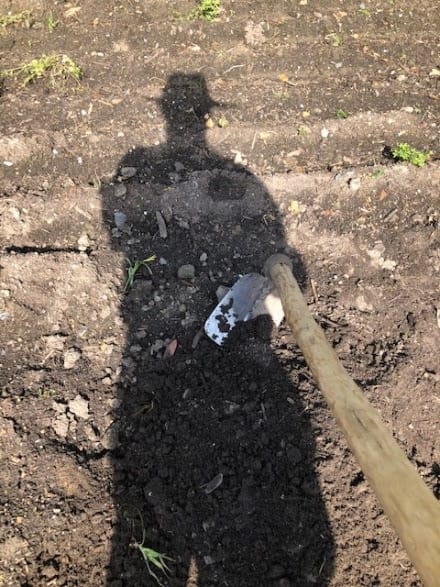
The tobacco seeds are a little bigger than the periods on this page of which about 10,000 fit into a teaspoon. In March, these are carefully sown into a bed of very rich soil and nurtured and worried about till about the first week of May when they are about three inches or so high.
Meanwhile the land has been “turned” as Landon called it and raised in hills. Depending on the stiffness of the soil this could mean about 3,000 hills per person per day. Though I never noted it in Historic Farming’s Farm Book, I think the most that I have done in a day is about 400. Of course, I share with guests while I am doing it and get them to help as well. Using a hoe in the hot sun is a humbling experience and believe it or not, many enjoy getting to know this simple, but critically important tool.
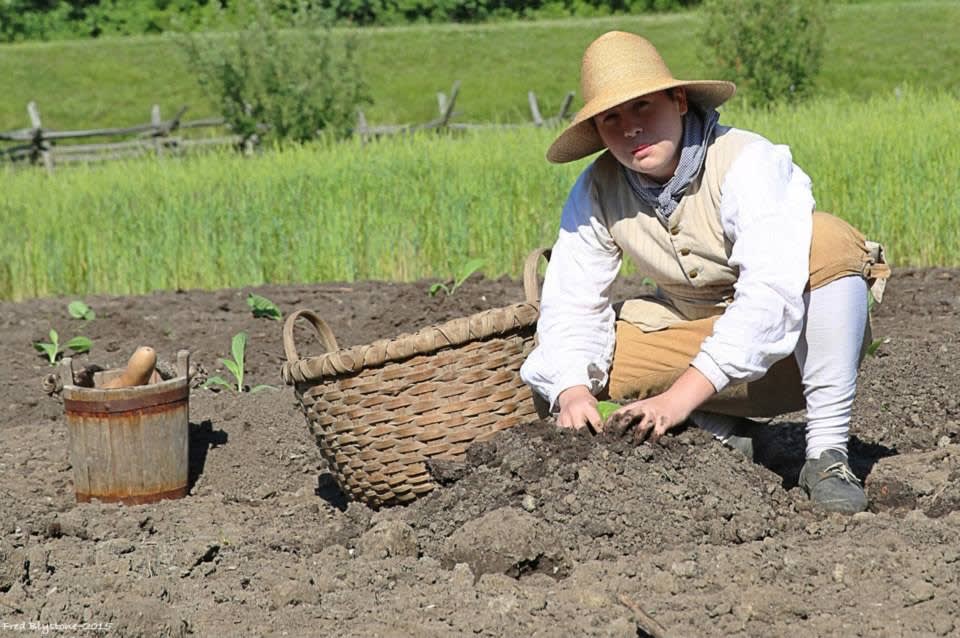
Time to “pitch” the plants into the hills. Preferably this is during a “season” when the hills have been turned to mud by rain, but sometimes we are reduced to watering the plant with a bucket of water and a gourd dipper. Nicholas Cresswell noted in his journal that he saw two enslaved people pitch three acres of tobacco in one day. Depending on how far the hills are apart that can be 3,000-6,000 plants each person per day.
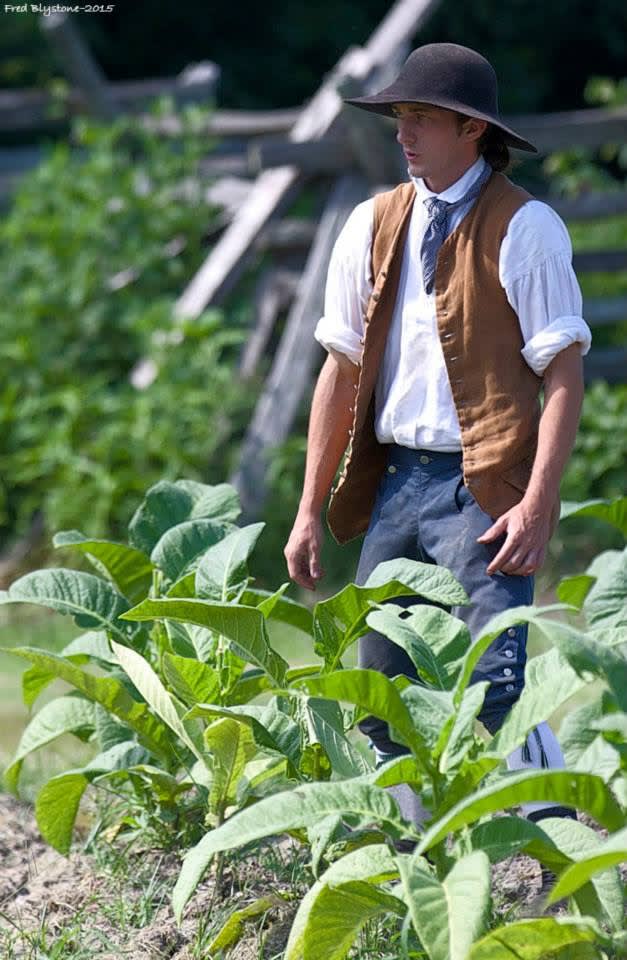
Now begins the long three-month season of growing it to perfection. The saying in the Historic Farming Trade is: “Tobacco First.” Sure, the corn might need weeding and the cotton re-hilling, but do not take your eye and brain off tobacco.
Almost immediately, insects descend upon the plants and the hornworm is the worst. Diligence and patience are necessary to destroy them. Mercy is not deserved as tobacco with worm holes in the leaves is considered “trash” and has no value on the market. The decision of the 18th-century Tobacco Inspector at the government warehouse was final no matter where one was in the social ladder. If it did not pass, it was burned. And along with it one’s reputation. I am my own Tobacco Inspector and my standards are high.
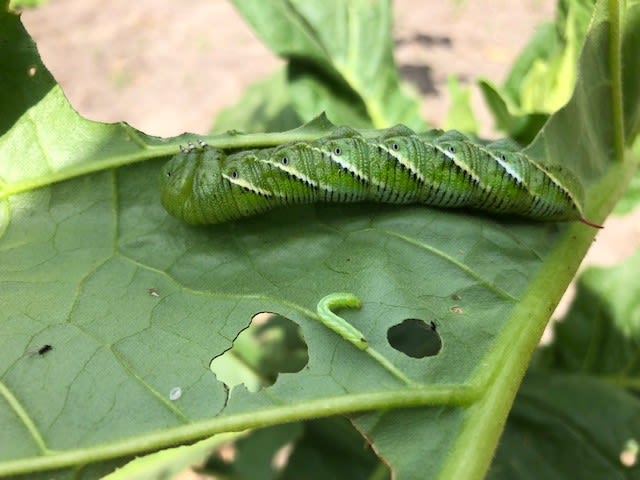
The plant keeps maturing and eventually creates a bud which will flower and produce seed. This would take energy away from the leaves so we “top” it by breaking out the stalk so that we leave 6-10 quality leaves that grow big and thick. This gives it more weight and at the time - this means more money.
Near the first of August, the plant is reaching the end of its life and time of cutting is nigh. William Tatham wrote in 1800 that “this operation is assigned to the best and most judicious hands…” meaning people with experience and good judgment to know when to cut. The assessment is fast and thorough. The leaves feel dry and have a distinct sound when tapped lightly. They get a pulpiness that to me has the look of spinach and a yellowish cast comes about them. The leaves curl downward at the point and edges. A little burning (called “firing”) is seen on the edges.
The final test is described in the early 19th-century farming journal called American Farmer as the leaves when “pinched in a fold between the finger and the thumb will crack or split with ease”. Now split the stalk almost to the bottom and cut it off at the ground. Lay it on the ground to wilt so that it is flexible.
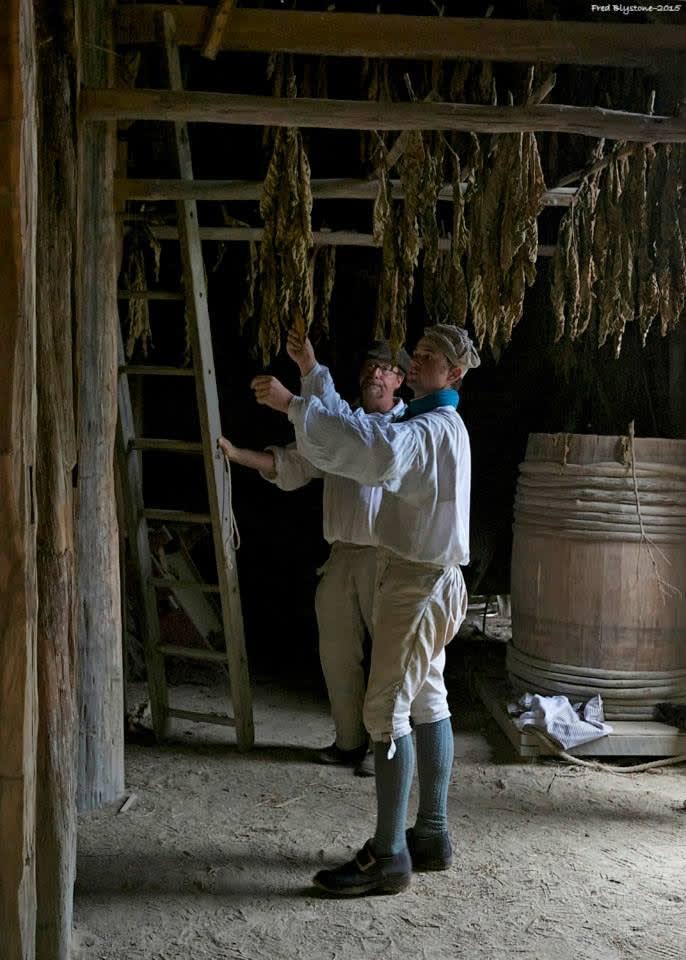
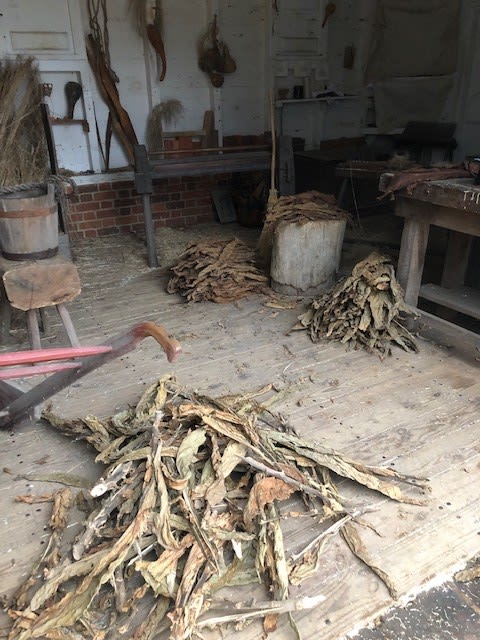
It is hung it up to cure for 4-6 weeks. This is an anxious time for me as I carefully monitor it and open and close doors that serve as vents to control the heat and humidity. Once it is cured to a chestnut brown color, I “strike” it (take it down) and “bulk” it into a pile. During a rainy day, the leaves will come into “case”. This flexibility allows them to be “stripped” off the stalks.
Did you catch all those terms? As you can tell, making good tobacco has its own language.
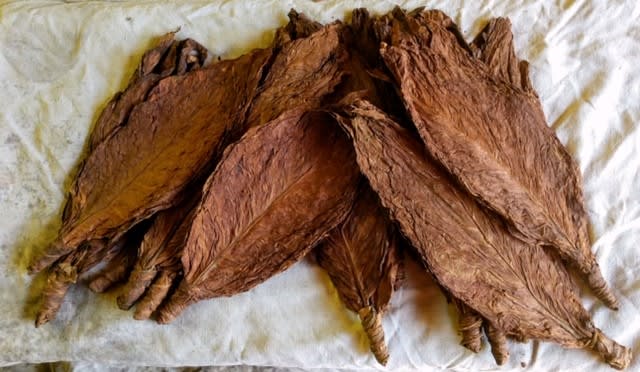
Perfection.
Only the leaves with “good color” of a chestnut-like brown are saved. Finally, the reward of nine months has arrived as I tie them into hands of 4-6 leaves. Virginians (or I) do not pack it into a special barrel called a “hogshead” and send it to England anymore to be made into products. Today, it is primarily given to various departments at Colonial Williamsburg to share the story of how Virginia was founded on tobacco.
So, there it is, almost a year of diligent and judicious labor filled with hope. It is a challenge every year and one worth sharing in the name of the many thousands both free and enslaved who did it in the 18th century. I hope that crop master Landon Carter would be proud.
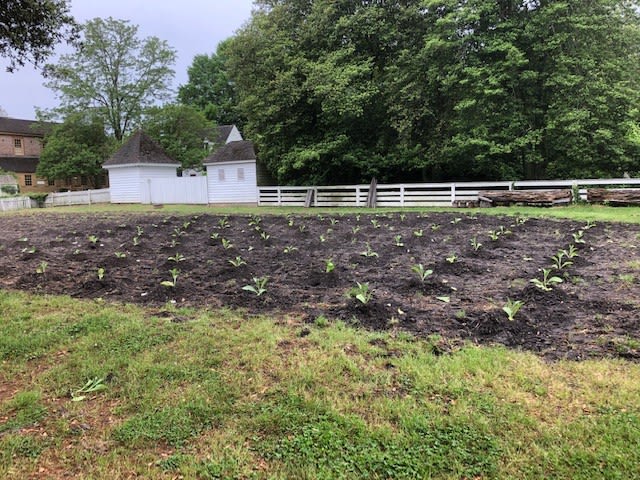
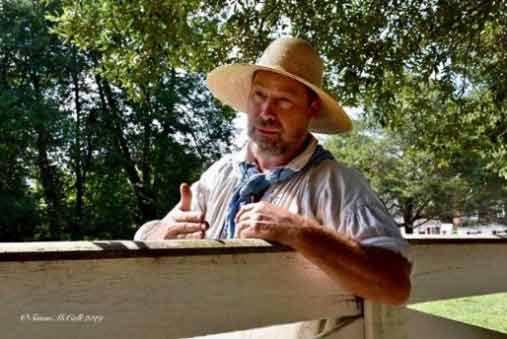
You can visit Farmer Ed Schultz in Prentis Field (Photo by Susan McCall)
Ed Schultz has worked as a historic farmer for 30 years with this being his 18th year at Colonial Williamsburg. After serving as a U.S. Army paratrooper, he earned a bachelor's degree in History and a Masters in Outdoor Museum Management. In 2019, he was awarded the Association of Living History, Farms and Agricultural Museums (ALHFAM) lifetime achievement award. He also works a small home farm with his family in the marshes of the Guinea Neck on the Chesapeake Bay.
Resources
Carter, Landon. The diary of Landon Carter of Sabine Hall, 1752-1778. Edited by Jack Greene. Charlottesville: University Press of Virginia, 1965.
Cresswell, Nicholas. The Journal of Nicholas Cresswell, 1774-1777. London: J. Cape, 1925.
Herndon, G. Melvin. William Tatham and the Culture of Tobacco including a facsimile reprint of an historical and Practical Essay on the Culture and Commerce of Tobacco by William Tatham. Coral Gables, Florida: University of Miami Press, 1969.
Breen, T. H. Tobacco Culture: The Mentality of the Great Tidewater Planters on the Eve of Revolution. Princeton and Oxford: Princeton University Press, 1985.
Skinner, John Stuart. American Farmer Volume III (November 1821).
